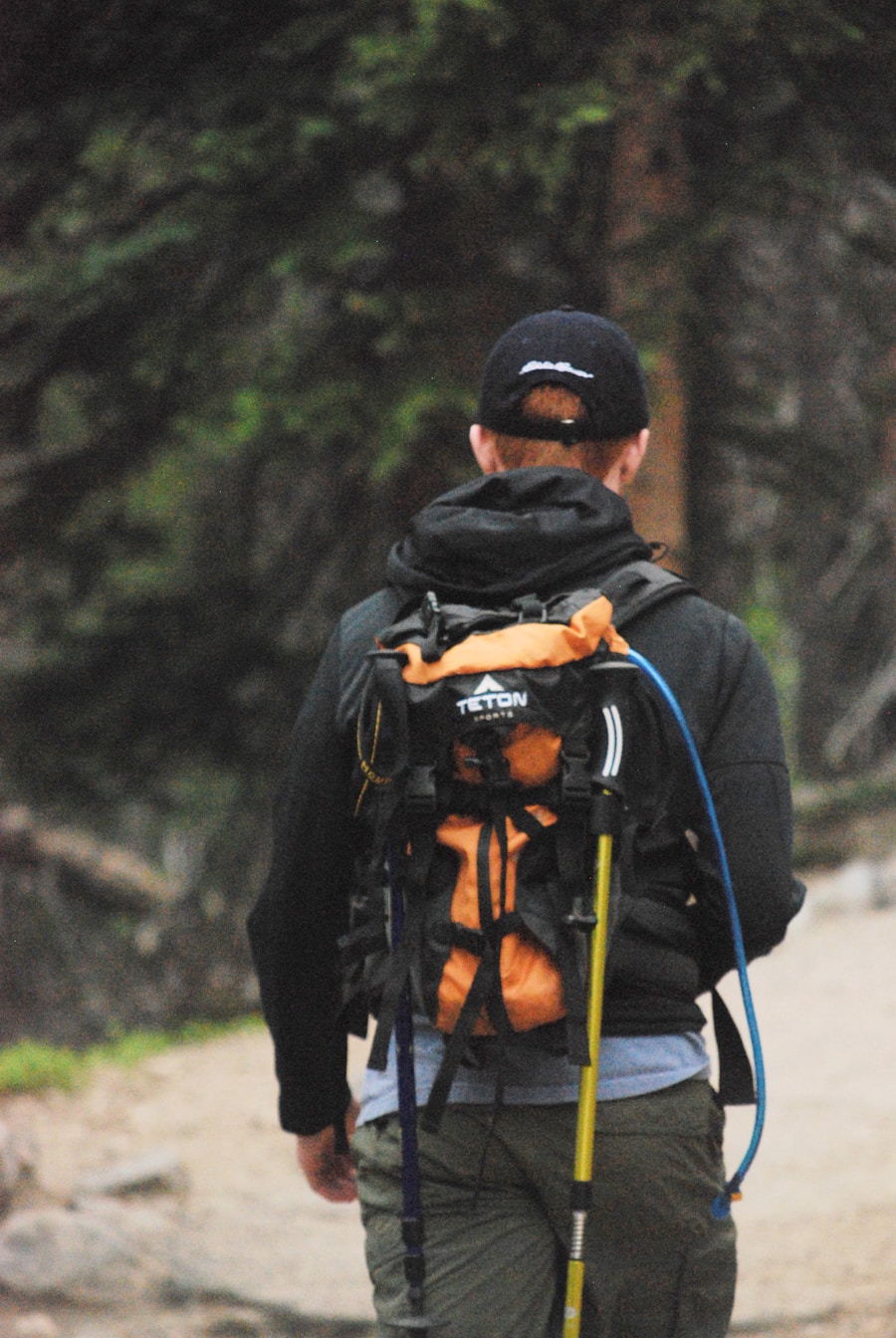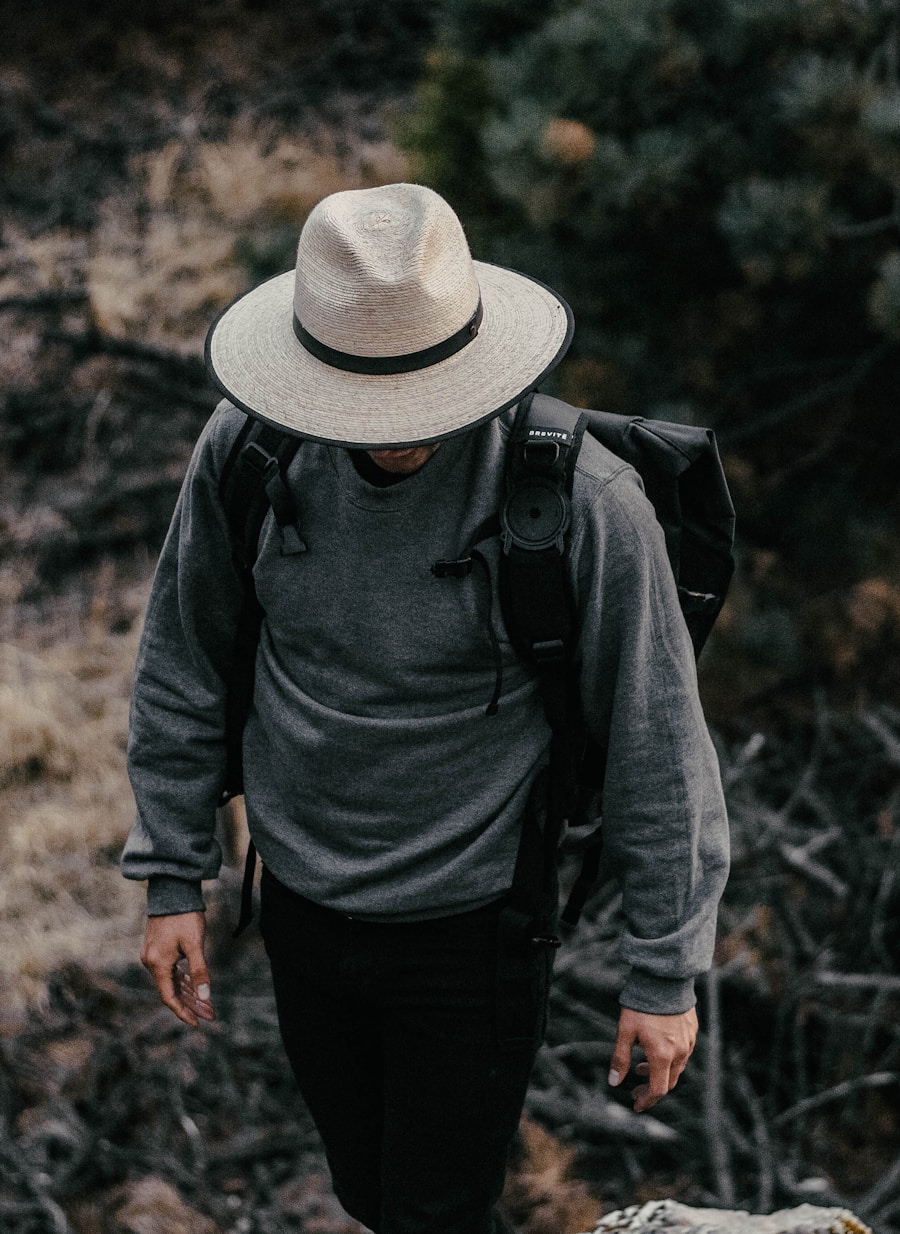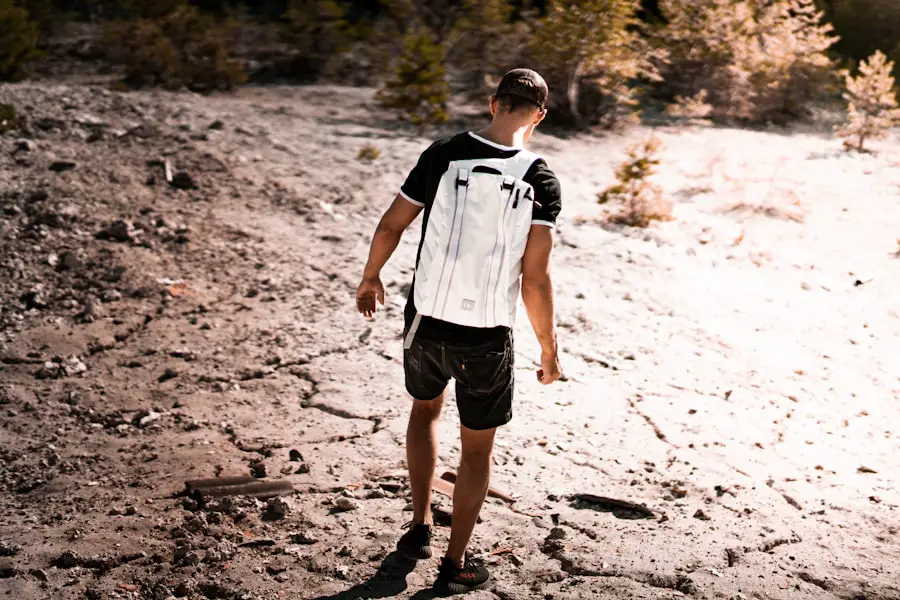Selecting the appropriate footwear is paramount for any outdoor adventure, whether it be hiking, trekking, or simply walking through rugged terrain. The right shoes or boots can significantly enhance comfort, support, and overall performance. When considering footwear, one must take into account the type of terrain that will be encountered.
For instance, if the journey involves rocky paths or steep inclines, a sturdy pair of hiking boots with good ankle support and a rugged sole is essential. These boots should ideally feature a waterproof membrane to keep feet dry in wet conditions, as well as a breathable upper to prevent overheating during warmer weather. Moreover, fit is a critical factor in choosing footwear.
Ill-fitting shoes can lead to blisters, calluses, and other foot ailments that can ruin an outdoor experience. It is advisable to try on shoes at the end of the day when feet are slightly swollen to ensure a proper fit. Additionally, wearing the socks intended for the hike during the fitting process can help gauge comfort levels accurately.
A good pair of moisture-wicking socks can also enhance comfort and reduce the risk of blisters. For those who prefer a lighter option, trail running shoes can be suitable for less demanding trails, offering flexibility and breathability while still providing adequate grip.
Key Takeaways
- Choose footwear that is comfortable, provides good support, and is suitable for the terrain you will be hiking in.
- Wear clothing that is breathable, moisture-wicking, and provides protection from the elements.
- Use sunscreen, sunglasses, and a hat to protect yourself from the sun’s harmful rays.
- Stay hydrated by drinking plenty of water and pack nutritious snacks to keep your energy levels up.
- Carry navigation tools, a whistle, and a first aid kit for safety, and organize your backpack for easy access to essentials.
Clothing for Comfort and Protection
Base Layer: Moisture Management
The base layer, typically made from moisture-wicking materials such as merino wool or synthetic fabrics, helps to keep sweat away from the skin. This is particularly important during strenuous activities where perspiration is inevitable. A well-fitted base layer can regulate body temperature and prevent chills when temperatures drop.
Middle Layer: Insulation
The middle layer serves as insulation and can include fleece jackets or down vests that trap heat while remaining lightweight. This layer is essential for maintaining warmth during cooler conditions or at higher altitudes.
Outer Layer: Protection and Convenience
The outer layer should be a durable, waterproof shell that protects against wind and rain. Look for jackets with features such as adjustable hoods, ventilation zippers, and pockets for convenience. Additionally, choosing pants made from quick-drying materials can enhance comfort during unexpected weather changes or water crossings.
Sun Protection

Sun protection is an often-overlooked aspect of outdoor preparation but is vital for long-term health and comfort. Prolonged exposure to UV rays can lead to sunburn, heat exhaustion, and even skin cancer over time. To mitigate these risks, wearing clothing with UPF (Ultraviolet Protection Factor) ratings can provide an additional layer of defense against harmful rays.
Long-sleeved shirts and wide-brimmed hats are excellent choices for shielding the skin while allowing for breathability. Sunscreen is another critical component of sun protection. A broad-spectrum sunscreen with an SPF of at least 30 should be applied generously to all exposed skin, including often-missed areas like the ears and back of the neck.
Reapplication every two hours, or more frequently if swimming or sweating heavily, is essential for maintaining protection. Sunglasses with UV protection are also crucial; they not only shield the eyes from harmful rays but also reduce glare from reflective surfaces like water or snow.
Hydration and Nutrition
| Metrics | Hydration | Nutrition |
|---|---|---|
| Water intake | 8 glasses per day | 5 servings of fruits and vegetables per day |
| Electrolyte balance | Maintain sodium and potassium levels | Balance of carbohydrates, proteins, and fats |
| Hydration status | Urine color and frequency | Body weight and energy levels |
Staying hydrated is fundamental during any outdoor activity, as dehydration can lead to fatigue, dizziness, and impaired physical performance. It is essential to drink water regularly throughout the day rather than waiting until thirst sets in. Carrying a hydration system such as a water bladder or multiple water bottles can facilitate easy access to water while on the move.
In addition to plain water, electrolyte-replenishing drinks can be beneficial during strenuous activities or in hot weather to maintain energy levels and prevent cramping. Nutrition also plays a significant role in sustaining energy levels during outdoor excursions. Packing lightweight, high-energy snacks such as trail mix, energy bars, or jerky can provide quick fuel when needed.
Foods rich in carbohydrates are particularly effective for quick energy boosts, while protein-rich options help with muscle recovery after exertion. Planning meals ahead of time and considering options that require minimal preparation can streamline the experience and ensure that nutritional needs are met without unnecessary hassle.
Navigation and Safety Gear
Navigating unfamiliar terrain requires reliable tools and equipment to ensure safety and direction. A topographic map of the area is indispensable for understanding the landscape and identifying potential hazards such as steep cliffs or water crossings. While digital navigation tools like GPS devices and smartphone apps have become increasingly popular, it is wise to carry a physical map as a backup in case of battery failure or lack of signal.
In addition to navigation tools, safety gear is essential for any outdoor adventure. A whistle can be a lifesaver in emergency situations, allowing for signaling without expending too much energy. A multi-tool or knife can serve various purposes, from preparing food to making repairs on gear.
Furthermore, a headlamp or flashlight with extra batteries ensures visibility during low-light conditions or emergencies after dark.
Backpack and Gear Organization

Efficient organization within a backpack can greatly enhance the overall experience of an outdoor adventure. A well-structured pack allows for easy access to essential items while keeping weight balanced for comfort during long treks. When packing a backpack, heavier items should be placed close to the back and near the center of gravity to maintain stability while walking.
Lighter items can be stored in outer pockets for quick access. Using packing cubes or dry bags can help compartmentalize gear and keep items organized within the backpack. This method not only makes it easier to find specific items but also protects gear from moisture if waterproof bags are used.
Additionally, having a designated spot for frequently used items like snacks, maps, or first aid supplies ensures that they are readily accessible without having to rummage through the entire pack.
First Aid Kit
A well-stocked first aid kit is an essential component of any outdoor adventure plan. Accidents can happen at any time, so being prepared with the right supplies can make a significant difference in managing injuries effectively. A basic first aid kit should include adhesive bandages in various sizes for cuts and scrapes, antiseptic wipes for cleaning wounds, gauze pads for larger injuries, and medical tape for securing dressings.
In addition to these basics, it’s wise to include items tailored to specific activities or personal needs. For instance, if hiking in areas where ticks are prevalent, including tweezers for tick removal is crucial. Pain relievers such as ibuprofen or acetaminophen can help manage discomfort from minor injuries or fatigue.
Furthermore, including any personal medications or allergy treatments ensures that individual health needs are met while away from home.
Additional Essentials
Beyond the fundamental gear discussed previously, several additional essentials can enhance safety and comfort during outdoor activities. A portable phone charger can be invaluable for keeping communication devices powered throughout the trip, especially when relying on GPS navigation or emergency contacts. A compact emergency blanket is another lightweight item that can provide warmth in unexpected situations.
Fire-starting tools such as waterproof matches or a lighter are critical for warmth and cooking in survival scenarios. Additionally, packing a small tarp or emergency bivvy can offer shelter in case of sudden weather changes or if one needs to spend an unplanned night outdoors. Finally, consider including a small notebook and pen; documenting experiences not only serves as a personal memento but can also be useful for noting important information about trails or conditions encountered during the journey.
When planning what to wear when hiking in the summer, it’s important to consider the best gear for your outdoor adventure. One essential item to bring along is a travel CPAP machine, especially if you suffer from sleep apnea. This article on the best travel CPAP machines provides valuable information on portable options that are lightweight and easy to pack. Ensuring you get a good night’s sleep while camping or hiking can make all the difference in your overall experience.
Love travel? Join Our Facebook Community For More Tips.
FAQs
What should I wear when hiking in the summer?
In the summer, it’s important to wear lightweight and breathable clothing that provides sun protection and wicks away sweat.
What type of shirt is best for summer hiking?
A moisture-wicking, lightweight, and breathable shirt made of synthetic materials or merino wool is ideal for summer hiking. Avoid cotton as it retains moisture and can lead to chafing.
What kind of pants are suitable for summer hiking?
Opt for lightweight and quick-drying hiking pants or shorts that provide sun protection and allow for freedom of movement. Look for options with built-in UPF protection.
What type of footwear is recommended for summer hiking?
Choose hiking boots or shoes that are breathable, provide good traction, and offer support for your ankles. Make sure they are comfortable and broken in before hitting the trails.
What accessories should I consider for summer hiking?
Don’t forget to wear a wide-brimmed hat for sun protection, sunglasses with UV protection, and apply sunscreen regularly. Additionally, consider wearing moisture-wicking socks and using trekking poles for added stability.
Are there any specific considerations for hot weather hiking?
It’s important to stay hydrated by carrying an adequate amount of water and electrolyte-replenishing drinks. Take frequent breaks in shaded areas and be mindful of signs of heat exhaustion or heat stroke.
